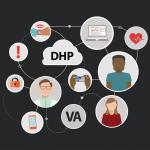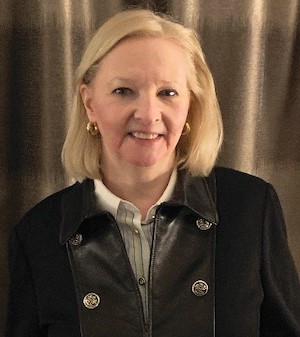 I recently participated in a nationwide (not the United States) healthcare IT planning effort and one recommendation was universal availability of patient portals. Several reviewers commented that patient portal is a loaded term - it implies that clinicians control the data and patients are given a view into it. One person said, “that’s so 10 years ago.” BIDMC has been working with patient/family shared medical records, Open Notes and various consumer-facing apps since 1999. Over that time we've discovered that patients typically do not want raw data, they want something actionable - the tools necessary to assist their navigation through the healthcare process...
I recently participated in a nationwide (not the United States) healthcare IT planning effort and one recommendation was universal availability of patient portals. Several reviewers commented that patient portal is a loaded term - it implies that clinicians control the data and patients are given a view into it. One person said, “that’s so 10 years ago.” BIDMC has been working with patient/family shared medical records, Open Notes and various consumer-facing apps since 1999. Over that time we've discovered that patients typically do not want raw data, they want something actionable - the tools necessary to assist their navigation through the healthcare process...
Fast Healthcare Interoperability Resources (FHIR)
See the following -
SAHMSA Contributes Open Source Code for Omnibus Care Plan to OSEHRA
 The Open Source Electronic Health Record Alliance (OSEHRA), a nonprofit membership organization dedicated to accelerating innovation through open source strategy, is pleased to welcome a major code contribution from the Department of Health and Human Services (HHS) Substance Abuse and Mental Health Service Agency (SAMHSA). The complete Omnibus Care Plan (OCP) Fast Healthcare Interoperability Resources (FHIR) and SMART on FHIR Infrastructure, including the Care Coordination and Consent Management code package, contributed using the Apache License Version 2.0, has been delivered to OSEHRA and is now available for the healthcare community.
The Open Source Electronic Health Record Alliance (OSEHRA), a nonprofit membership organization dedicated to accelerating innovation through open source strategy, is pleased to welcome a major code contribution from the Department of Health and Human Services (HHS) Substance Abuse and Mental Health Service Agency (SAMHSA). The complete Omnibus Care Plan (OCP) Fast Healthcare Interoperability Resources (FHIR) and SMART on FHIR Infrastructure, including the Care Coordination and Consent Management code package, contributed using the Apache License Version 2.0, has been delivered to OSEHRA and is now available for the healthcare community.
- Login to post comments
SMART Health IT Project Releases Update to Its App Gallery
The SMART Health IT Project has developed an updated version of its app gallery, enabling those looking for apps based on the Fast Healthcare Interoperability Resources to have an easier time looking and comparing. The Computational Health Informatics Program at Boston Children’s Hospital unveiled the refreshed gallery as a beta release at this week’s HIMSS17 conference and is now live... In June 2016, the Office of the National Coordinator for Health Information Technology awarded SMART Health IT a grant to support enhancement of the SMART App Gallery...
- Login to post comments
Taking Stock: Interoperability and National Health IT Week
During a two-hour panel discussion hosted by ONC this week, yours truly provided views on the current state of interoperability. In celebration of National Health IT Week, panelists were asked to provide their thoughts on the biggest advancements made in interoperability, ways that government and industry should work together, and concerns about future challenges...
- Login to post comments
Team Demonstrates Digital Health Platform for Department of Veterans Affairs
 “Liberate the data.” That was a principal design goal for a team of public-private health care technology collaborators established by the U.S. Department of Veterans Affairs and Veterans Health Administration to develop a working and scalable proof-of-concept digital health platform (DHP) to support the department’s long-term vision. The open-source project demonstrated both proven and emerging technologies for interoperability and advanced functionality innovations from both the public and private sectors...
“Liberate the data.” That was a principal design goal for a team of public-private health care technology collaborators established by the U.S. Department of Veterans Affairs and Veterans Health Administration to develop a working and scalable proof-of-concept digital health platform (DHP) to support the department’s long-term vision. The open-source project demonstrated both proven and emerging technologies for interoperability and advanced functionality innovations from both the public and private sectors...
- Login to post comments
The Evolving Landscape of Health Information Exchange
 The original vision for nationwide health information exchange was a “network of networks” model where local HIEs would interact HIE-to-HIE to form a virtual national network. But notice that many of the new initiatives are essentially solving a different problem: they are enabling point-to-point connections across a wider geography and set of clinical sites. This seems more like a large, single national network rather than leverage of more distributed organizations or implementations. Only time will tell if these private sector initiatives will collaborate, converge or compete. And only time will tell of the limitations of ONC’s ability to influence and provide leadership will creates gaps or provide new opportunities for innovation.
The original vision for nationwide health information exchange was a “network of networks” model where local HIEs would interact HIE-to-HIE to form a virtual national network. But notice that many of the new initiatives are essentially solving a different problem: they are enabling point-to-point connections across a wider geography and set of clinical sites. This seems more like a large, single national network rather than leverage of more distributed organizations or implementations. Only time will tell if these private sector initiatives will collaborate, converge or compete. And only time will tell of the limitations of ONC’s ability to influence and provide leadership will creates gaps or provide new opportunities for innovation.
- Login to post comments
The HITECH Era in Retrospect
At a high level, the Health Information Technology for Economic and Clinical Health (HITECH) Act of 2009 accomplished something miraculous: the vast majority of U.S. hospitals and physicians are now active users of electronic health record (EHR) systems. No other sector of the U.S. economy of similar size (one sixth of the gross domestic product) and complexity (more than 5000 hospitals and more than 500,000 physicians) has undergone such rapid computerization...
- Login to post comments
The Strengths and Weaknesses of the HL7 FHIR Messaging Standard
 It has been several years since we reviewed the progress of the HL7 FHIR standards adoption rate. Health Level Seven's (HL7) Fast Healthcare Interoperability Resources (FHIR) is an emerging standard that has rapidly captured the mind-share of the Health Information Technology (HIT) standards community. FHIR is a standard that enables healthcare data sharing between systems in a manner that is more easily implemented and more expressive than previous HL7 standards such as HL7 Version 2, 3 and Clinical Document Architecture (CDA). Regardless of the version of HL7 standard used, the purpose of these standards is to send clinical data in messages, whether to a party inside or outside your organization. HL7 devises flexible message formats so the receiver of the message can open it up, know who sent it and why, and break it down into understandable segments and data fields.
It has been several years since we reviewed the progress of the HL7 FHIR standards adoption rate. Health Level Seven's (HL7) Fast Healthcare Interoperability Resources (FHIR) is an emerging standard that has rapidly captured the mind-share of the Health Information Technology (HIT) standards community. FHIR is a standard that enables healthcare data sharing between systems in a manner that is more easily implemented and more expressive than previous HL7 standards such as HL7 Version 2, 3 and Clinical Document Architecture (CDA). Regardless of the version of HL7 standard used, the purpose of these standards is to send clinical data in messages, whether to a party inside or outside your organization. HL7 devises flexible message formats so the receiver of the message can open it up, know who sent it and why, and break it down into understandable segments and data fields.
- Login to post comments
True Interoperability: Public API’s Provide the Open Platform Health IT Requires
Do we finally have the spark? Interoperability is the current health IT buzzword because it’s the essential ingredient in creating a system that benefits patients, doctors and hospitals. Almost everyone in healthcare is pressing for it and is frustrated, though probably not surprised, that Meaningful Use did not get us there. Read More »
- Login to post comments
UCHealth’s OpenNotes Journey: From a Few Docs to Enterprise-Wide Acceptance
 Although the OpenNotes initiative—designed to give patients access and ability to read visit notes online—has now reached 12 million patients in the U.S. alone, there have been challenges and pushback along the way, dating back to the beginning of the movement. In fact, says CT Lin, M.D., chief medical information officer (CMIO) at UCHealth, a 7-hospital, 400-clinic system in the Rocky Mountain region, the “original” OpenNotes was actually called “SPPARRO,” or “Systems Providing Patients Access to Records Online”...
Although the OpenNotes initiative—designed to give patients access and ability to read visit notes online—has now reached 12 million patients in the U.S. alone, there have been challenges and pushback along the way, dating back to the beginning of the movement. In fact, says CT Lin, M.D., chief medical information officer (CMIO) at UCHealth, a 7-hospital, 400-clinic system in the Rocky Mountain region, the “original” OpenNotes was actually called “SPPARRO,” or “Systems Providing Patients Access to Records Online”...
- Login to post comments
VA Lays Out Plans for Cloud-Based Digital Health Platform
 The Department of Veterans Affairs has developed a blueprint for a cloud-based technology platform that will integrate veteran data from VA, military and commercial electronic health records, as well as apps, devices and wearables, so that the information is available to providers in real time. While the VA is still finalizing plans for how it implements the Digital Health Platform (DHP), the agency has a strategy in place that is seen as the future path for providing next-generation healthcare to millions of the nation's veterans...
The Department of Veterans Affairs has developed a blueprint for a cloud-based technology platform that will integrate veteran data from VA, military and commercial electronic health records, as well as apps, devices and wearables, so that the information is available to providers in real time. While the VA is still finalizing plans for how it implements the Digital Health Platform (DHP), the agency has a strategy in place that is seen as the future path for providing next-generation healthcare to millions of the nation's veterans...
- Login to post comments
What is Patient and Family Engagement?
- Login to post comments
Where's The Plan For Interoperability?
Six reasons we will not have health IT interoperability without an architecture...
- Login to post comments
Why the Touchstone Project is so important to HL7 FHIR
 The AEGIS Touchstone Test Platform, launched at the most recent HL7 FHIR Connectathon in Atlanta, Georgia in October 2015, provides the means to help guide FHIR implementations toward a high degree of conformance and interoperability within a continuous testing and integration model. As stated by HL7 CEO Charles Jaffe, MD, PhD, “A successful testing program also provides FHIR development teams at HL7 with the essential infrastructure that is critical for all of our stakeholders."
The AEGIS Touchstone Test Platform, launched at the most recent HL7 FHIR Connectathon in Atlanta, Georgia in October 2015, provides the means to help guide FHIR implementations toward a high degree of conformance and interoperability within a continuous testing and integration model. As stated by HL7 CEO Charles Jaffe, MD, PhD, “A successful testing program also provides FHIR development teams at HL7 with the essential infrastructure that is critical for all of our stakeholders."
- Login to post comments
Wikipedia and Facebook for Clinical Documentation
Over the past several years I’ve written about the inadequate state of clinical documentation, which is largely unchanged since the days of Osler, (except for a bit more structure introduced by Larry Weed in the 1970s) and was created for billing/legal purposes not for care coordination...In recent lectures, I’ve called on the country to adopt Wikipedia and Facebook for clinical documentation...
With Apple consulting Argonaut Project on health records, interoperability could get the push it needs
Apple is said to be working with the Argonaut Project to integrate more electronic health data with the iPhone, a move experts say could go a long way towards advancing medical record interoperability. Participants in the Argonaut Project – an HL7-led initiative focused on expanding the use of open standards for health data exchange, notably HL7's FHIR specification – are some of the industry’s most notable vendors and providers: Accenture, athenahealth, Cerner, Epic, McKesson, Meditech, Surescripts, The Advisory Board Company, Beth Israel Deaconess Medical Center, Boston Children's Hospital, Intermountain Healthcare, Mayo Clinic, Partners HealthCare...
- Login to post comments